Harry Stoddart's Blog, page 2
February 27, 2015
Spring must be coming…
While the weather outside doesn’t suggest winter is going to end any time soon, there are some happenings in the barn that suggest spring is just around the corner.
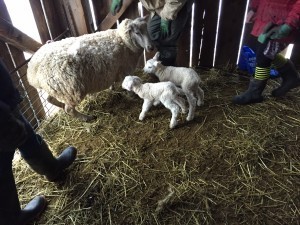
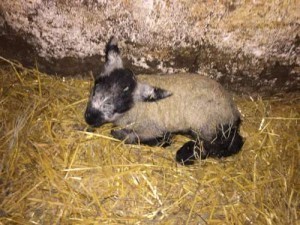
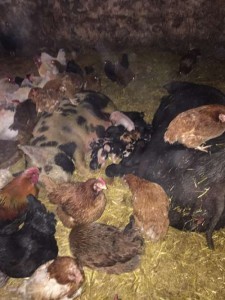
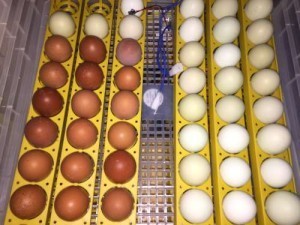
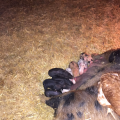
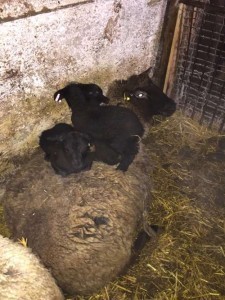
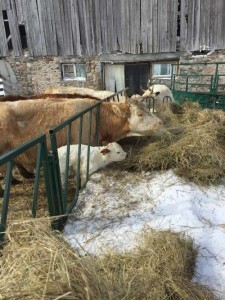
February 1, 2015
A Day in the Life of Our Ducks
I got an outdoor time lapse camera for Christmas. So I set it up for a day, focussed on our duck flock coming and going from the greenhouse. Watch right to the end to see the late day sun and shadows.
Country Guide Article featuring the Stoddart Family Farm
Country Guide, a national monthly agriculture magazine, had an article on The Stoddart Family Farm in their January 2015 issue. Here’s the link to the online version:
http://www.country-guide.ca/2015/01/14/organic-by-choice-sort-of/45613/
Photo: Deb Deville
February 8, 2014
Harry’s Interview on Health Media Now Blog Talk Radio
It’s a wide-ranging 40 minute interview
“Sustainable” Agriculture: Often Debated Rarely Understood
This blog post was originally published January 25th, 2014 on FoodTank.org. This is the first in a series of posts that I will be writing for Food Tank over the coming months.
Conventional and organic agriculture are currently arguing about which has the least ugly dog. Regardless of which one wins, they will still have an ugly dog. A less ugly dog is not equivalent to a beautiful dog.
“Sustainable” in the agricultural context is a term that is often debated but rarely understood. Frequently, the debates are framed as a choice between “organic” and “conventional” agriculture. Proponents of both sides argue passionately for their position – each claiming superiority. If we understand sustainable as “less harmful” then there is room for debate – it is difficult to determine which set of methods are least harmful when you consider all the various dimensions of agriculture that can be unsustainable. However, if you use the true definition of “sustainable” – the ability to be sustained indefinitely, we can reach a clear conclusion based on solid research. Neither organic nor conventional agriculture is truly sustainable.
The core process of agriculture is sustainable – the transformation of solar energy into hydrocarbons and proteins for human use. At this basic level, all outputs from agriculture can be used as inputs to agriculture in an infinitely sustainable loop powered solely by solar energy. A truly sustainable system has no “waste” – the output of every process is an input for another process. For example, animal dung is plant food. The CO2 exhaled by animals is an input to photosynthesis in plants. Dead plant material is food for microbes and animals.
If we want to understand what a truly sustainable agricultural system looks like, we need look no further than the ecosystems that surround us. Ecosystems are not only sustainable but are also accretive – over time they accumulate the ability to capture more solar energy and feed more organisms.
Regardless of what you picture when I write the word “ecosystem,” that ecosystem has a number of properties:
1. It is completely solar powered.
2. Its water is supplied by the natural water cycle (predominantly but not necessarily completely rain fed.)
3. There is no bare soil.
4. All nutrients are recycled.
5. The plants are primarily perennial.
6. There are animals.
7. It is diverse.
To achieve sustainability, this is a good starting point for the goals that we (all eaters) need to set for agriculture. Our current agricultural methods consume fossil energy and are net contributors of greenhouse gases. While most discussions of the environmental impact of food have focussed on food miles, the production methods and level of processing are a much greater contributor to emissions than the distance travelled. However, localizing your food supply has one big advantage – it allows you to observe the landscape that produces your food. You can directly observe the production system and compare it to the list of ecosystem properties above.
There is no label in a grocery store that guarantees the food was produced using methods that are healing the planet. A monoculture field of organic lettuce is only marginally less damaging than a field of conventional monoculture of lettuce. Both destroy soil through excessive tillage, both rely on significant amounts of irrigation water, both are annual crops and neither crop will have recycled nutrients applied. There is little similarity between a field of lettuce and an ecosystem.
There is also no specific food choice that guarantees you a positive impact on the planet. Beef cattle are often disparaged as a climate destroying luxury we can no longer afford. However, 100% grass-fed cattle spend their lives munching on diverse perennial pastures that are not tilled, generally rain fed and the majority of nutrients are recycled in place. Soil can build under a well-managed pasture. Yet, Arizona is an example of what happens when a pasture is poorly managed. Over grazing of cattle destroyed a brittle ecosystem – both the carbon cycle and the water cycle were destroyed in the blink of eye.
When you eat, you are swallowing the future – literally and figuratively. Current agricultural practises are diminishing our ability to produce food in the future. Hence, swallowing food today is also swallowing food that won’t be available in the future. However, what you swallow today sends a signal to the marketplace to produce more of what you swallow. Your food choices today will influence what is produced in the future. If you choose truly sustainable food you will be signalling the market to produce more.
You, as an eater, have more power over the food system than governments or multi-national corporations because collectively, eaters spend more than either. Significantly more. Many people challenge me by saying their purchases are inconsequential in the larger scheme of things. Every year, many rivers overflow their banks. Every year, people protect their homes by building dykes. Those dykes are primarily constructed of bags of sand. Every one of those dykes starts the same way – with one bag of sand filled by someone. Think of your grocery bag the same way.
My next article will be published Feb 13th, 2014 on FoodTank.org. It will examine a set of principles around which the food movement could unite.
December 31, 2013
Sows and Soil: Building a Sustainable and Profitable Farm
This post originally appeared on Ecoagriculture.org at http://blog.ecoagriculture.org/2013/09/30/stoddart_real-dirt/
How does the way we think about intensifying agricultural production change when not just focused at a farm level? It’s unfortunate that this question needs to be asked at all. Nothing in the biological world has the defined boundaries that we use to understand our world. Ecosystems are fractal structures that every time you zoom in closer look exactly the same – from the planet as a whole down to the organelles within a cell – the boundaries that we define don’t exist. There is no life form that exists that is not dependent on another life form. For example, we cannot survive without the oxygen from plants and the digestion provided by the flora in our guts. To define and manage a “farm” without considering the context of the surrounding ecosystem and community is folly. Yet that is exactly what modern agriculture does – success is measured by the yield per acre. There is very little thought given to the impact beyond the farm. If we started from a goal of creating a flourishing future for every living creature forever – thank you to John Ehrenfeld for the definition – we would change our management of farms significantly.
If we want a flourishing future for the planet, we have to change our agricultural practises. Agriculture modifies more of the landscape than any other activity. Agriculture consumes 70% of our freshwater takings. Agriculture emits 10-20% of carbon emissions (depending on the particular bent of the person measuring.) Phosphorus and nitrogen runoff from farms is destroying aquatic ecosystems. Agricultural practises are consuming topsoil and organic matter.
In order for the planet to flourish in the future, agriculture has to be changed from a destructive force into a regenerative force. We need agricultural production methods that build soil, are carbon negative, are primarily rainfed, and rely on recycling nutrients.
The fundamental flaw in current agricultural practises is a management framework that causes us to focus on the financial return in the short term without considering the long term costs and benefits, which ultimately favours annual monocultures. Properly managed perennials can build soil, are more resilient and can be managed through erratic rainfall more easily than annuals but they can’t beat the short term windfalls available from corn or soybean production (although those windfalls are diminishing every time I look at the futures.)
The challenge is to meet a farm’s short-term goal of profitability (a pre-condition for a sustainable farm) while working towards the long-term goals. The good news is that we already understand how to achieve these goals. We only need to look to the ecosystems that we are surrounded by. The framework I prefer for managing towards a flourishing future is Allan Savory’s Holistic Management® framework. Using it causes a fundamental shift in approach. The farm operation becomes a tool you are using to create the lifestyle that you (and the other members of your production team, including your family) want and the future you desire for yourself, your land, and your community. Every management decision is tested against whether it moves you towards your long-term goals. You explicitly consider your impact on the four main ecosystem processes: energy flow, water cycling, mineral cycling, and population diversity.
Our farm has gone through a few major transitions since I bought my parents conventional farrow-to-finish confinement hog operation almost 20 years ago. Our first challenge with sustainability was economic – a devastating disease outbreak and the hog market crash in ’98 pushed us to the edge of bankruptcy. We reinvented ourselves as a certified organic cash crop farm but started to see negative impacts on our soils from too much tillage and were concerned that we were back into a price-taking role in the market. We’ve now transitioned to a Community Supported Agriculture model for grass-fed and pastured meats. This model addresses our need for financial sustainability, focuses us on serving customers in a local market to sustain our community, and allows us to farm with a model primarily based on perennials managed in a way that builds soils. And on top of that, I should be able to pass the farm onto the next generation in better shape ecologically and economically.
A farm cannot exist in isolation from the ecosystem and community that surrounds it, and therefore, management decisions must take into consideration their impact on the ecosystem and community.
Read more:
Real Dirt: An Ex-industrial Farmer’s Guide to Sustainable Eating: www.realdirt.ca
Holistic Management: www.holisticmanagement.org or http://www.savoryinstitute.com
August 26, 2013
We got a mention in an article in The Star on Paleo
The reporter spent a fair bit of time out in the pastures shooting pictures of me with the cattle and sheep. I even risked a momma cow’s wrath by getting up close with her calf as she hovered in the background giving me not so subtle warnings that she was contemplating giving me a new orifice if I didn’t back away from her calf! I thought at least one might make the paper. Oh well, they spelled my name right. I’ve heard my pic did make the print version. The online version featured a different image.
Here’s the link:
August 17, 2013
Compost Pile: Look where you want to go!
When I was in my late teens and about to start a co-op work term that had me driving all over Ontario, my parents gave me a two day training session at a skid control school for Christmas. The instructors went over some basics about car handling and then threw us out on the skid pad to see what we could do. I was confident I knew what I was doing – I threw the car in neutral, feet away from the pedals and proceeded to do a beautiful 360. After we were all humbled, they took us back in the classroom and explained why we had all failed to control the skid. None of us were focussing on where we wanted to go. If you focus on where you want to go, a little technique plus your reflexes will get you there. If you focus on where you don’t want to go, your reflexes will get you there. They told us that most secondary collisions (the chain reaction ones) were avoidable but because people focussed on the collision ahead of them instead of where they needed to go to avoid it, they ended up increasing the mess.
We’re wasting a lot of time. energy and money railing against the companies and issues that we don’t want to define our future. How much could we have accomplished if all the effort put into supporting California Proposition 37 (Mandatory GMO Labelling) had instead been spent promoting and building the alternative? We already have a non-GMO label: certified organic. You can assume that everything else has GMOs in it’s supply chain somewhere.
I’m trying to focus on building and describing the new alternative food system that we need to create to replace the old one. Food production does not have to be an extractive industry. We can regenerate the planet if we modify agricultural practises. Agriculture can be used to suck material amounts of carbon out of the atmosphere. Agriculture in areas of chronic hunger can feed the hungry. Modified agricultural practises can save soil, reduce the dead zones at the ends of river systems, and reclaim the land we are losing to desertification.
I’m not interested in sustaining a planet on life support. My goal is to use agriculture to regenerate the planet. That is the premise and promise of Real Dirt: An Ex-industrial Farmer’s Guide to Sustainable Eating. I’ve gathered as much knowledge as I can about all the various “problems” with agriculture and then looked at what the solutions are. There is an amazing amount of overlap between the solutions to many seemingly unrelated problems. Real Dirt describes how you can choose a diet that regenerates the planet. It focuses you on the future we all want. (And it doesn’t prescribe endless meals of kale, garbanzo beans and rice.)
We need to focus on what a flourishing future looks like if truly want to get there.
July 17, 2013
Can Industrial Agriculture Feed the World?
Industrial agriculture opponents have been on the offensive of late, bolding asking the question: “Can organic agriculture feed the world?” Organic advocates have been taking the bait. There are innumerable articles outlining why organic agriculture can feed the world. However, no one seems to be tackling the statement implicit in the question. By asking the question, people are inferring that industrial/conventional agriculture CAN feed the world.
I hate to break it to you, but the answer to the question “Can industrial agriculture feed the world?” is an emphatic “No.” Industrial agriculture consumes natural gas, oil, soil, water and organic matter. The natural gas is an input to the creation of nitrogen fertilizers. Oil powers the machines, transportation and food processing. Most of the soils of agricultural regions are classed as “degraded” by the United Nations. Canada has a set of maps that show estimated erosion across Canada. The maps don’t have a colour for no erosion. The “Green” colour is used for low erosion that is still measured in tonnes per hectare annually.
If you live west of the Mississippi in the US, agriculture is sucking the water out from under your feet. Every major aquifer from the Ogallala west is being depleted faster than it can recharge. The dead zones at the mouth of every major river system in the world are partially the result of industrial agriculture.
Industrial agriculture is reducing our ability to feed ourselves at the very time when we need to be increasing. Nitrogen application rates per tonne of expected yield are rising – we are less efficient in our use of nitrogen than we were 20 years ago.
All of this is masked by rising yields produced through increased use of fertilizer, unsustainable irrigation and crop “protection” chemicals. Industrial agriculture is an extractive industry. Agriculture could be a regenerative industry but the current industrial model is extracting and consuming resources with no attention to regenerating them.
While the questions to organic are designed to slow the growth of organic production (in political parlance, industrial agriculture is trying to “define the ballot question”) and gain mindless acceptance for new technologies, the real question we should be asking is “how does agriculture need to change to be truly sustainable long term?”
Watch for my book “Real Dirt: Confessions of a Reforming Industrial Farmer”, slated to be published by Iguana Books in the fall of 2013. It starts the discussion on my final question.
July 8, 2013
I’m featured in my publisher’s July newsletter
I made the Iguana books newsletter this month! Here’s the link:
http://us6.campaign-archive1.com/?u=c508f7edd34e289ba1946c3b0&id=33fc7f890b&e=f18540643f



